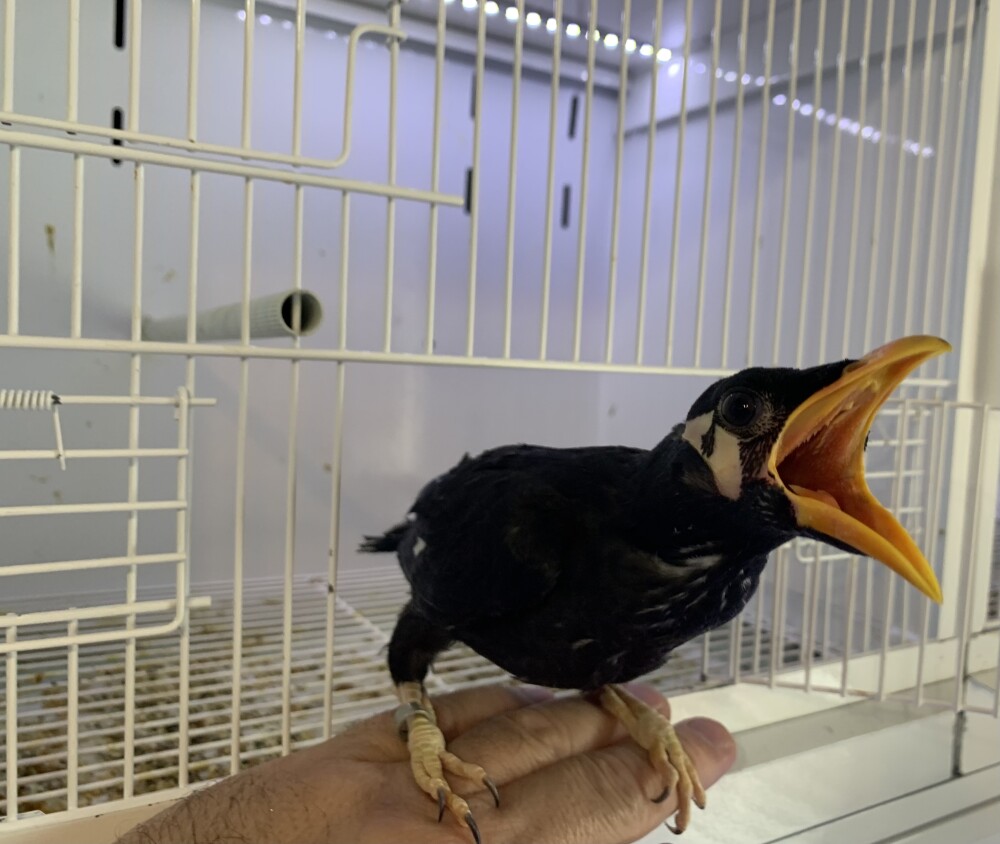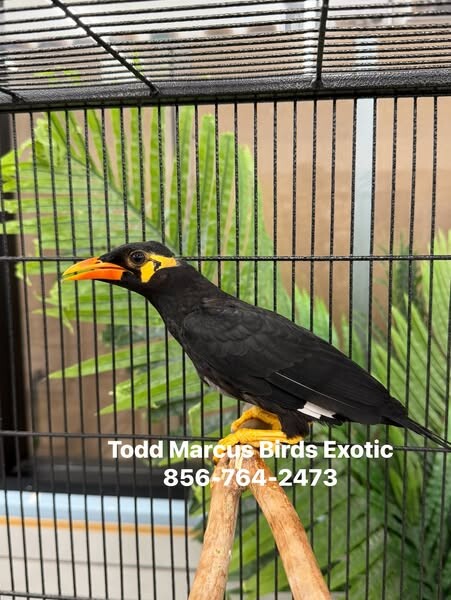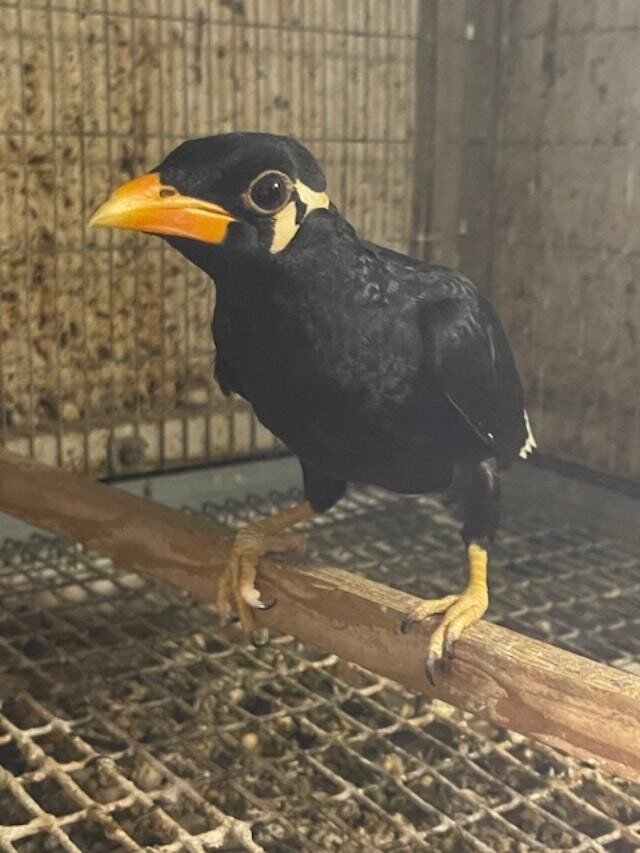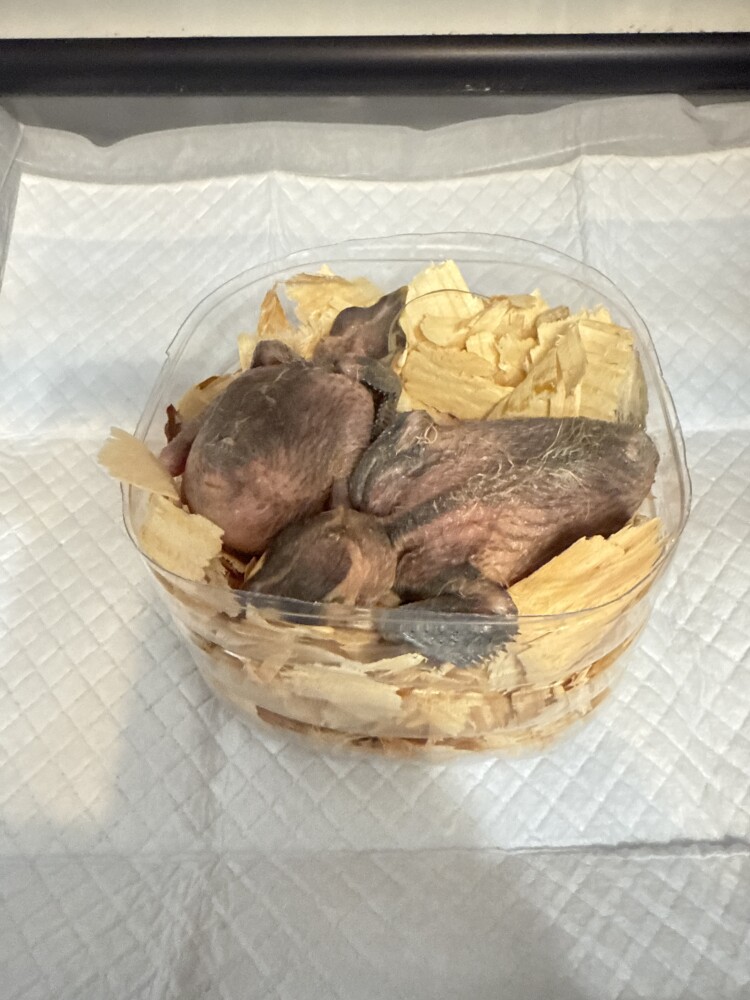Hill Mynah for Sale
(Gracula religiosa)
The hill mynah is the species of mynah bird that is most commonly seen in aviaries and as pets. As a member of the starling family, the hill mynah had black plumage that has a green or purple gloss to it, and bright yellow or orange feather-less skin on its head and nape. The bird is typically just under a foot in length. Hill mynah birds can produce a wide range of calls, from whistles and screeches to human-like sounds to gurgles. The birds are more vocal at sunset and sunrise when they congregate in small groups in the forest canopy. The unique vocalization of the mynah makes it a favorite among bird enthusiasts.

Greater Indian Hill Mynah
- Name: Juan
- Posted: 10/23/2025
- Phone: 4073833223
- Email: Email Seller
- Location: Florida
GIH MYNAH FOR SALE 58 days old. Ready to go home.

Greater Indian Hill Mynah
- Name: BIRDS EXOTIC INC
- Posted: 10/17/2025
- Phone: 8567642473
- Email: Email Seller
- Location: New Jersey
- Website: thebirdstore.com
Male Greater Indian Hill Mynah available! He is hand tame and a very outgoing little guy. He was hand raised and loves his mazuri and fruit. All our birds are very well socialized and used to everyday household activity. At Birds Exotic you can trust...

GREATER HILL MYNAH
- Name: Roland Cristo
- Posted: 10/06/2025
- Email: Email Seller
- Location:
2025 BRED HAND RAISED,VERY CALM BIRDS LEARNING TO TALK SS HEN

Greater Indian Hill Mynah baby for sale
- Name: Juan
- Posted: 09/15/2025
- Phone: 4073833223
- Email: Email Seller
- Location: Florida
Last Mynah of the Season . Thank you for looking

Birds available
- Name: Robert Yoshida
- Posted: 05/08/2025
- Email: Email Seller
- Location: Florida
Emerald starlings Superb starlings Greater blue eared glossy starlings Emerald starlings Green Woodhoopoes Red billed magpies Fischer’s turaco White crested turaco Blue throated conure FL only Young male Helmeted curassow Indian hill my...
Hill Mynahs Habitat
Hill mynah birds make their homes in the forests of southern Asia and the islands of Indonesia and Sri Lanka. In captivity, a mynah’s cage should be at least three or four feet wide, two feet tall, and two feet deep. It should be easily accessible for cleaning and include wooden perches with a diameter of about one inch. A nesting box placed in the cage will give the bird a private place to nap.
Captive diet for Hill Mynahs
Please note: feed twice daily
Choice of fruit: 14 grams diced figs, dates, grapes, apple, orange, pears, bananas; or 1/2 can fruit cocktail or diced fruit, also eugenia, pyracantha, hawthorn berries, elderberries, or mulberries.
Boiled rice with milk: 14 grams rice boiled 5 minutes until fluffy
Hard-boiled egg: 19 grams crumbled on rice Purina Trout Chow: 14 grams moistened with water and mixed with rice
Insects: 5 grams mealworms, crickets, cockroaches or grasshoppers or shredded beef heart if insects are not available (Note: no meat should be fed when chicks are in the nest.)
Minerals: 5 grams Vionate multivitamin powder sprinkled on egg
Mynahs are omnivores and, in the wild, they will eat insect, larvae, frogs, lizards, snakes, fruits, leaves, eggs, and even baby rodents. They do not eat seeds. Mynahs kept as pets should be provided with a varied diet. While there are commercial pellet feed that will meet the basic nutritional needs of a mynah bird, it should not be the only food the bird is fed. Freshly-washed, chemical-free fruits and vegetables that have been cut into small pieces should be offered to the bird in a separate food dish.
Hill Mynah Habitat
Mynah birds are intelligent creatures and enjoy mental stimulation. Toys designed for parrots, such as swings and bells, can also be enjoyed by the mynah. Puzzle toys that release food treats upon solving will also keep the bird entertained.
Breeding Mynahs
Mynahs can be challenging to breed in captivity. The birds form monogamous relationships and both the male and female build their nest together, using twigs, feathers, and leaves. Their breeding season varies depending on weather and temperatures but is usually between April and June. The female will lay two or three blue eggs with brown spots. These eggs will hatch in 15 days. A good breeding pair of hill mynah can reproduce up to three times in a year.

Comments